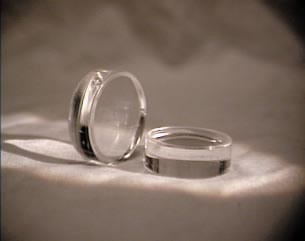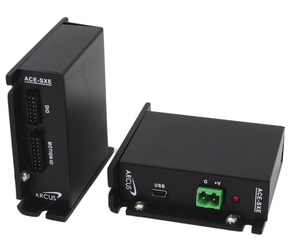- 首页
- Application Solutions
- Atmospheric Turbulence
- Turbulence simulator
Turbulence simulator
$10,000.00
- Description
- Brand
Description

Lexitek's turbulent phase plates are primarily used in adaptive optics (AO) systems engineering. Because wavefront sensors and deformable mirrors have a high degree of freedom, wavefront aberrations are the main ones that affect most system performance, especially for atmospheric propagation. The most accurate way to design, test, and validate the performance of AO systems is to use well-characterized wavefront aberration instrumentation in the laboratory. Lexitek's Near-Index-Match™ pseudo-random phase board provides AO system engineers with such a tool. Multiphase plates with different intensities can simulate the distribution of turbulent spheres, each with random variations.
Turbulent phase plates
Typical parameters
|
specification
|

Lexitek's turbulent phase plates are primarily used in adaptive optics (AO) systems engineering. Because wavefront sensors and deformable mirrors have a high degree of freedom, wavefront aberrations are the main ones that affect most system performance, especially for atmospheric propagation. The most accurate way to design, test, and validate the performance of AO systems is to use well-characterized wavefront aberration instrumentation in the laboratory. Lexitek's Near-Index-Match™ pseudo-random phase board provides AO system engineers with such a tool. Multiphase plates with different intensities can simulate the distribution of turbulent spheres, each with random variations.
Phase plates are made from a layer of CNC machined acrylic and optical polymer. The design optical path difference (OPD) of the surface processing is scaled by 1/δn. Optical windows with AR coatings are often bonded to the interlayer to improve surface quality and parallelism.
Electric rotary table
| Model | Number of motor steps | Gear ratio | Motor torque oz-in |
Motor size | Speed (rpm) |
Maximum speed (rpm) |
itinerary | weight | Maximum part size | Clear aperture | Microstep | Full Step Rev |
Maximum Rev |
|---|---|---|---|---|---|---|---|---|---|---|---|---|---|
| HS-100 | 200 | January 1970, 1 | 83 | Nema 17 | 300 | >400 | 360° | 5.5 | 4" | 3.75" | 1, 2, 4, 8 | 600 | 4800 |
| LS-100 | 400 | January 1970, 1 | 4 | Nema 14 | 10 | >40 | 360° | 3.5 | 4" | 3.75" | 1, 2, 4, 8 | 1200 | 19200 |
| LS-100-SU | 200 | January 1970, 1 | 45 | Nema 17 | 100 | >200 | 360° | 4.5 | 4" | 3.75" | 1, 2, 4, 8 | 2400 | 9600 |
| LS-50 | 400 | January 1970, 1 | 16 | Nema 17 | 100 | >200 | 360° | 2.5 | 2" | 1.75" | 1, 2, 4, 8 | 1600 | 12800 |
Lexitek offers the most affordable motorized rotary platform to introduce time variation, with a large clear aperture. Available in a variety of sizes and speeds. The platform is usually driven by a stepper motor, but servo motors can also be configured. A variety of controllers (e.g. from Arcus) are available, equipped with all the necessary cables for interoperability. These platforms are designed to hold large optical components, but can also be used for test and inspection applications for a variety of systems with large optical apertures.
We offer LS-4 and HS-100 platforms for 100" / 100 mm optics and LS-2 for 50" / 50 mm optics.
1D control table
ACE-SXEspecification
- 6M maximum pulse rate output
- Encoder feedback support
- Analog joystick control
- USB 2.0 and RS-485 (9600-115K bps) communication
- Modbus RTU support
- Digital IO communication + easy-to-use interface
- Independent control via a programming language similar to BASIC
- 12 to 48 VDC voltage input
- Opto-isolation + limit-limit and main input
- Opto-isolated digital inputs
- Opto-isolated digital output
Brand
OEfind
相关产品
Hartmann wavefront sensor
$10,000.00
ALPAO high-speed deformable mirror
$30,000.00
Hot Air Atmospheric Turbulence Simulator
$30,000.00




